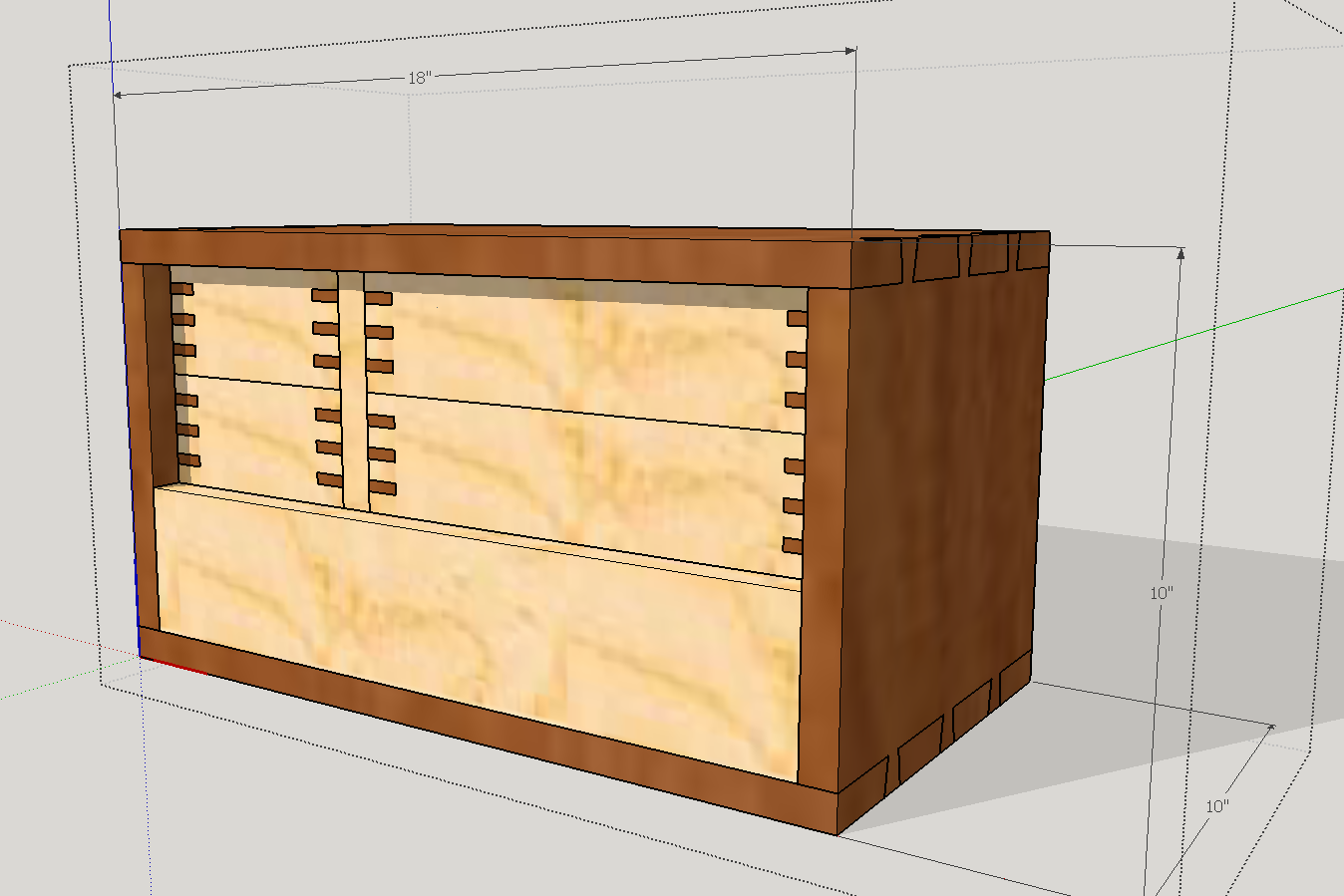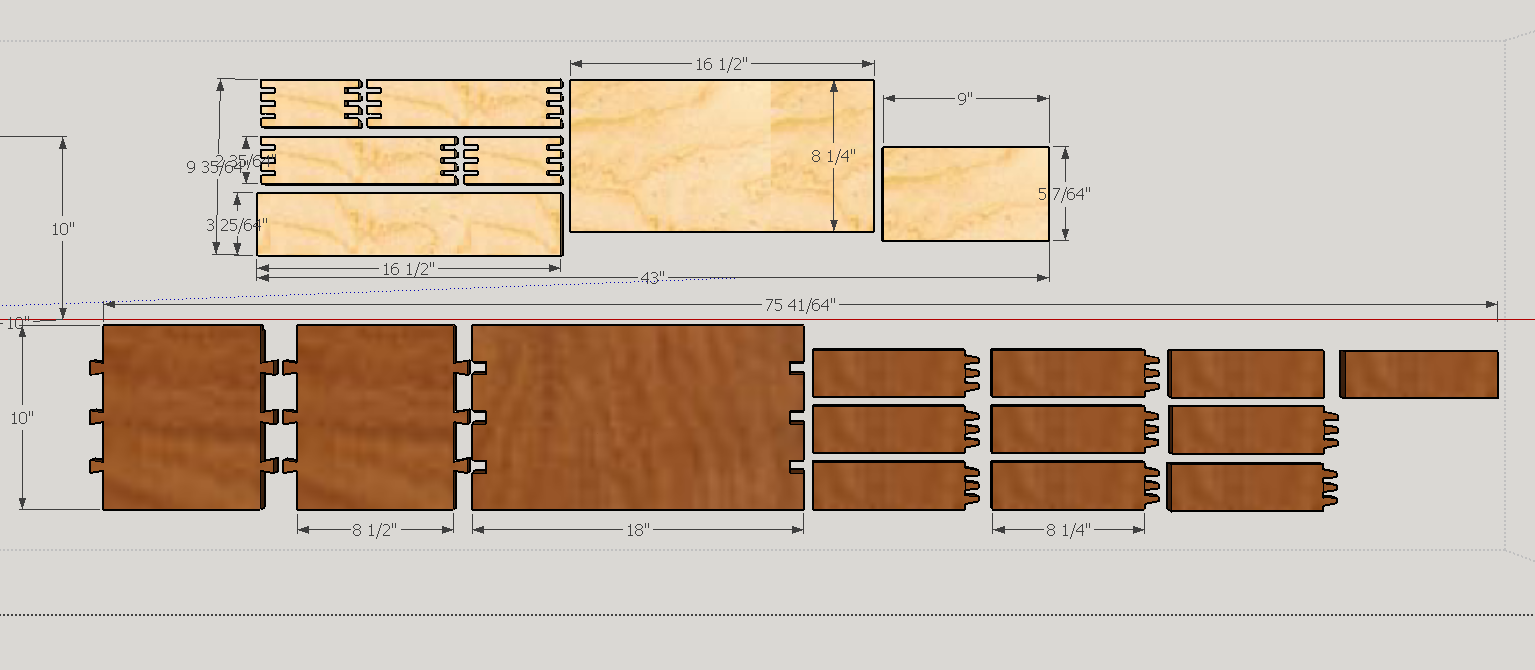Small Tabletop Chest: Intermediate Woodworking Project
This small tabletop chest was inspired from a design copied from the class project of Camille Larrey’s Intermediate Woodworking Class at ACC. It was made based off of a diagram of general parts required and the overall dimensions of 18x10x10’'.
In features 24 dovetails for the upper drawers and an additional 12 for the panels. In the rendering the cabinet panels are using the “Wood Cherry Original” material from sketch up while the drawer fronts “birds eye maple” and side panels, “cherry finished” from an article on wood grain textures1 however when it came down to purchasing lumber I only went with two species.
- The project starts January 27th 2017 and takes approximately 140 hours of in-class time to finish.
- It requires 2 types of wood and approximately 12 BF of 4/4 and 6/4 lumber.
- Lumber was purchased at Dakota Premium Hardwoods in Austin and cost approximately $100.

During the modeling I made several mistakes, but one of the easiest to make and watch out for was the orientation of the dovetails. If you look at the following image you can see that the joint does not prevent the two planes from coming apart but when reversed, they form a tight lock.

Here the dovetails have been corrected and lock together.

The dovetails for the drawer have still not been corrected in the following renderings but it is on my list of things to do when I start getting more specifics on the chest I’ll actually be constructing in class.
The big thing to keep in mind when buying wood for a chest is how it will move as the weather changes. This affects how much wood you need to buy since certain pieces need to be cut from the raw lumber in certain ways so during expansion and contraction the chest contents will still be accessible.
In this image the drawers were cut from grain that will cause it the expand vertically when summer comes and water content of the air increases. To prevent them from sticking during that expansion, a gap is left for seasonal adjustment.
